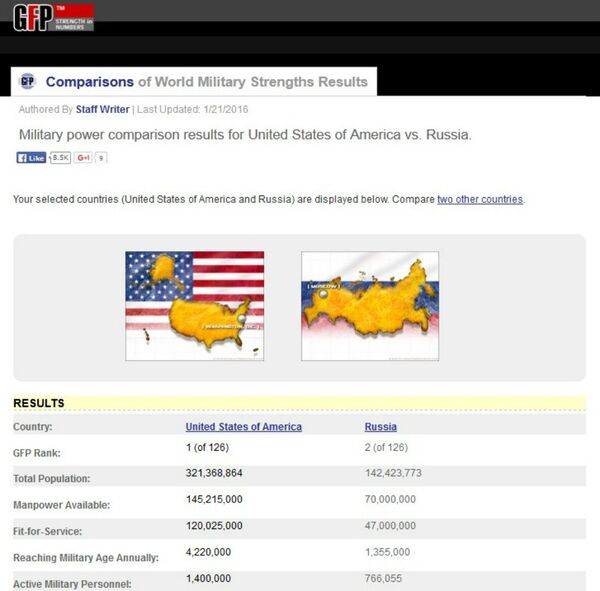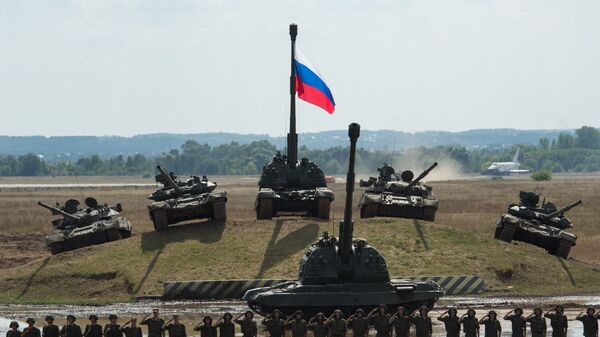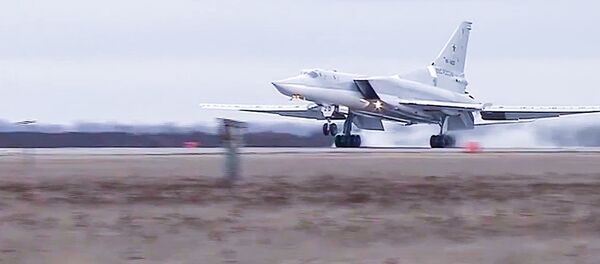This seems to be far from the truth, however.
“Until a few years ago, the West assumed that after the collapse of the Soviet Union, the Russian military was languishing for a long time. The equipment was considered ailing,” writes the online German magazine Focus in a recent article on the topic.
“But those days are gone: Russia has upgraded vigorously and in some areas the Russians have even outmatched the US,” it adds.
The outlet refers to the “Power Index” rating compiled by the Global Firepower (GFP) website.
Using data from publicly-available sources such as CIA.gov, The CIA World Factbook, Wikipedia.com, public domain print and media sources, the GFP ranking assesses each nation’s potential conventional war-making capabilities across air, sea and land.
The ranking is based on more than 50 factors, including military budget, available manpower, and the amount of military hardware each country has in its arsenal. Nuclear capability is not taken into account.

The higher the rating, the lower the country’s position in the overall ranking. The perfect score would be 0.000.
With GFP Power Index rating of 0.1865, Russia is ranked second out of a total of 126 countries, with only the US ahead (with 0.1663) and followed by China (with 0.2318).
China comes second in this category, with $155.6 billion, Saudi Arabia is ranked third with an annual spend of $56.7 billion. Great Britain is fourth with $55 billion.
The Categories Where Russia Comes First
Tank strength: 15,398 for Russia, which is ranked first vs 8,848 for the US, which comes third in this rating.
Self-Propelled Guns (SPG): 5,972 for Russia vs 1,934 for the US, which is only fourth in this category.
Multiple Launch Rocket System (MLRS) Strength: 3,793 for Russia vs 1,331 for the US, which comes only sixth in this rating.
Towed Artillery: 4,625 for Russia, which is fourth in the category vs 1,299 for the US, which is only twelfth here. The leader in this rating is India, with 7,414, and China comes in second with 6,246.
Russia’s Merchant Marine Strength is also a lot higher (1,143) than that of the US (393), with a relatively comparable Fleet Strength (362 vs 473 correspondingly). Corvette Strength rating however is more powerful for Russia (81) vs the US (none).
In Mine Warfare Strength Russia also comes far ahead, ranked first with 45 vs only 11 for the US, which is ranked twelfth.
The Power Index also provides a very interesting non-military comparison between Russia and the US. For example, Russia’s external debt is a lot less than that of the US and is calculated in billions, not trillions of dollars.
Oil Production results in an advantage for Russia, while Oil Consumption is higher in the US.
Focus notes that the massive modernization and procurement program has reinstated Russia’s prominence on the world stage. The European Council on Foreign Relations, a European think tank, has called Russia’s development a “quiet military revolution.”
The think tank also recognized the administrative and training reforms that have trimmed the size of Russia’s top heavy armed forces, producing a group of smaller, more mobile, and more versatile military units.
While it argues that a major military escalation is not imminent, it does not rule it out, and suggests that Europe should be prepared to handle hybrid scenarios that combine conventional and non-conventional warfare.






